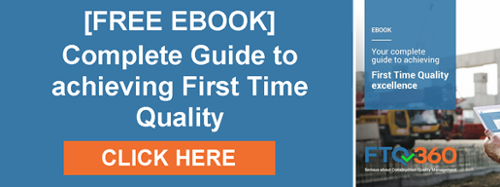
Typically, commissioning engineers' daily activities involve collecting inspection and test data and then transferring that information into inspection reports, tracking deficiencies on spreadsheets, and then communicating their findings to other team members throughout every construction phase to allow a functional performance testing environment.
The most common manual system used for project management typically involves a combination of paper-based notes, Excel spreadsheets for measuring data, camera images, and Word documents for reporting, all in accordance with the owner's project requirements. While this approach may suffice for limited or small-scale projects, larger projects require a more comprehensive approach that encompasses the entire commissioning process, including building commissioning and a quality assurance process.
But new mobile apps are unseating Excel and Word as the default tools for commissioning inspections.
For many years Excel was the default, due to the high volume of technical demands and testing that was specific to the commissioning process. Manual entry was the only way to handle this complex mix of repetitive measurements, verification checks and handling computer-generated reports to maintain facility performance across the project's entire cycle.
But it has its problems as it isn't an efficient quality focused process. Common examples of these disadvantages being version control of forms and Excel files, plus delays in preparing the reports.But mostly it is the non-productive time lost moving data from one form to another, extracting relevant information and communicating it to responsible parties.
However, the good news is that with the use of new Cx software and building commissioning software, engineers can collect the field data directly into an app that will automatically prepare the commissioning report and punch lists without further manual intervention to aid in the project development process. This means that you can replace manual procedures with automated workflows to generate commissioning reports and then communicate issues with your commissioning team. Having the ability to generate new construction commissioning reports.
Using the app in the field also narrows the scope for any errors by your construction team or anyone for that matter, as the point of data entry is once (by the engineer in the field) thus reducing transcription errors.
This data can be approved, either remotely or on-site, and utilized to generate punch lists and reports, which are then disseminated to all required parties. The field inspectors can carry out this task on-site, such as during equipment tests, effectively reducing the need for extensive offsite administrative work. This streamlined process focuses on facility systems, design, and construction, ensuring that reports and punch lists are promptly delivered to the appropriate recipients.
The new construction commissioning software offers smart inspection screens that will dynamically expand to capture every aspect of inspections and repetitive tests while using databases to store measurement, observations, pictures, and supporting files. This means that filling out checklists, inspection and commissioning forms is much quicker than filling in the paper equivalents and the commissioning process timeline is shortened. The end result – you can save time and money.
With the use of cloud servers to store the data, it is then easy as a few clicks to prepare on demand computer-generated reports from any location for your construction projects.
As you may deduce, the new construction commissioning apps are not just an evolution of the spreadsheet or paperless forms.
This innovative technology, pioneered by commissioning providers, enables field engineers to dedicate their focus to commissioning inspections, building systems and tests. Simultaneously, the software automates the construction of systems and optimizes administrative processes, eliminating unnecessary tasks. This advanced solution also emphasizes the importance of proper documentation, enhances indoor environmental quality, and facilitates the comprehensive process of new construction commissioning.
Since the early 1990s, the FTQ360 team has been pioneering the development of quality and safety systems.
If you would like to streamline your inspections for existing buildings or new building projects, eliminate unnecessary tasks and focus on critical systems, then book a Free Demo and see how we can deliver on all of these and more.
- The FTQ360 software will be set up to reflect your business goals
- Your Demo session will be conducted by a knowledgeable expert
- We will discuss and show you solutions to your Commissioning challenges, commissioning plan and final commissioning report
- The Demo is completely without obligation
And if you have any questions, please feel free to get in touch. At FTQ360, we’re serious about quality. If you are too, we’d love to talk.

